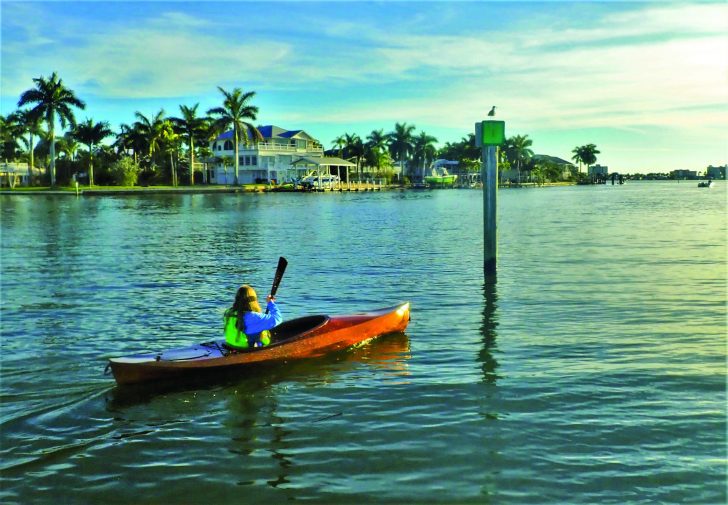By: Mike Hammond
When the Calusa Blueway route was being planned, considerable thought went into keeping paddlers out of the way of heavy boat traffic. But with almost 200 miles of paddling trail, crossing the occasional boating channel was inevitable.
The first step with any paddling outing is planning. When considering distance, tides, weather, ability – check the Calusa Blueway maps or boating guides for channel crossings. If I’m paddling with less experienced paddlers, I avoid busy channels on weekends. There are too many other great places for newbies to get more comfortable before adding boat traffic to the mix. If I’m with experienced paddlers, channels are more likely to be included in the float plan.
I think everyone’s parents have told them to “look both ways before crossing the street,” the same applies for channels. Start looking both ways long before crossing the channel and remember that they sometimes zig-zag. If you focus on just one marker, you may end up closer to the channel than you intend to be. Look for several markers so you know the channel’s path.
If you’re paddling with a group, stop several boat lengths before entering the channel and wait for everyone in your group to join you. When you’re sure everyone is ready, line up next to each other and cross quickly and together when it is clear. Do not spread out or leave your slowest paddler behind. Boaters may have difficulty seeing paddlers because of glare off the water, a high riding bow or distractions. Moving as a group makes you more visible and easier to avoid.
When crossing, paddle straight across and get well off the channel even if it is headed in the direction of your destination. Large vessels need to be in the channel. We do not.
Do not try to cross in front of an approaching boat. Wait until they pass, but beware that some of the bigger vessels can throw off a significant wake. Some of the waves are big enough to surf or swamp you. I try to time the boat wake so I’m hitting the waves with my vessel’s nose / bow first head-on or at a slight angle with some momentum. This may mean altering my course a bit to set up. Give boaters space so you have time to adjust.
Finally, after safely crossing, keep paying attention to the markers to be sure you don’t paddle back into the channel. I recently got involved in a conversation on the water and missed the fact that the channel turned toward shore. Subsequently, I was paddling in the middle of the channel without knowing it.
While waiting for other vessels to clear the channel before we crossed, a friend tried to explain how we had the right of way. With all due respect to my friend, I didn’t care. The number one Rule of the Road on the water is avoid collision, especially if you’re in the much smaller vessel.

